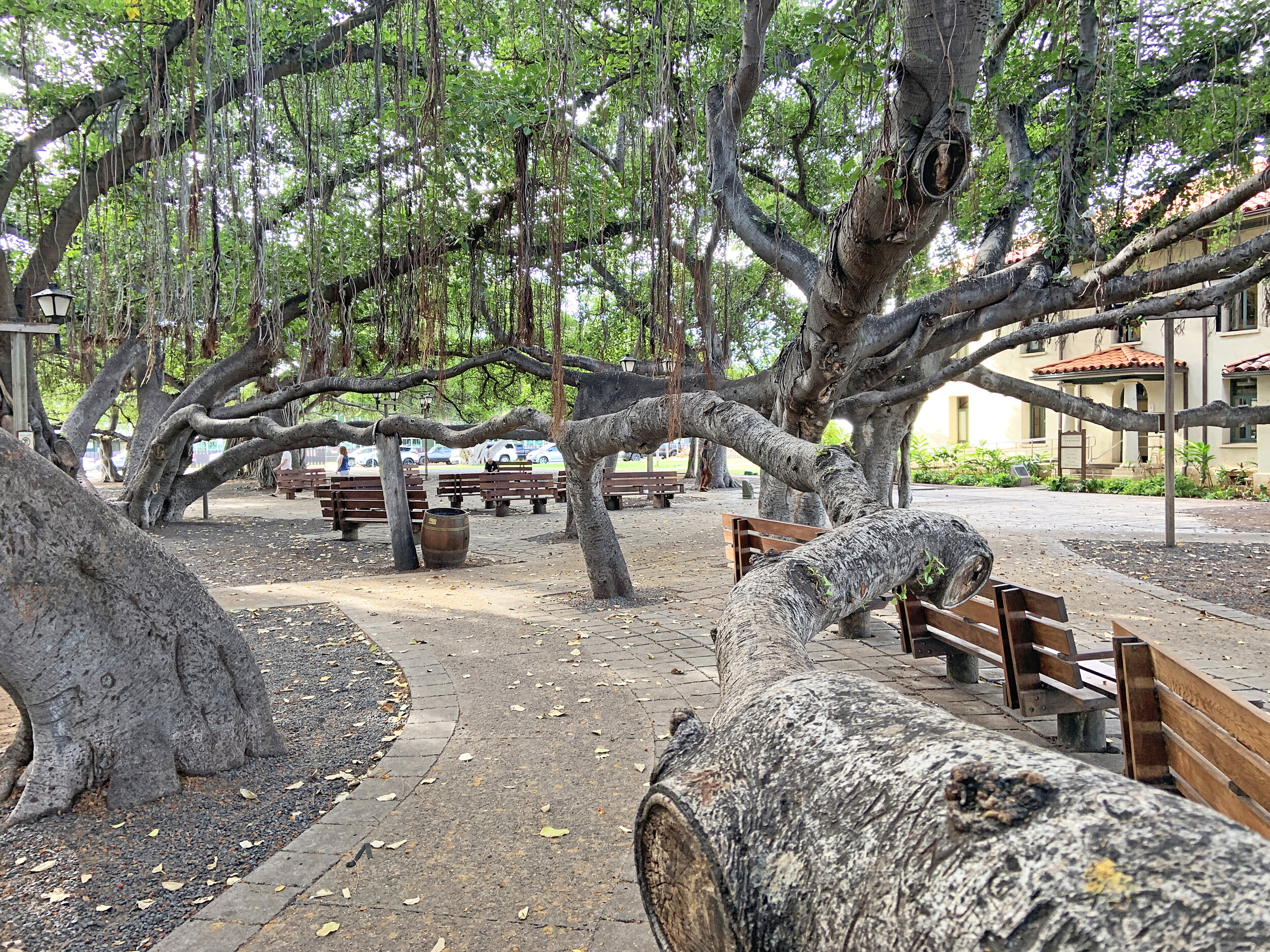Maui's Banyan Tree
/The Banyan Tree has had the support and caring from the community. Japanese gardeners hung buckets of water under the areal roots they wanted to grow into trunks. As the roots grew to the water, the water would be lowered until the roots reached the ground. In other places braces were put under limbs to steady them and keep them from drifting to he ground. Unwanted aerial roots were trimmed to keep the symmetry of the tree.
Standing in the presence of a tree which has witnessed the passage of generations and watched society invent cars, electricity, telephones, radio and television, cellphones and computers is a sobering unforgettable experience.
With coronavirus spikes across the United States travel is out of the question at the moment. The prospect of a coronavirus vaccine gives a glimmer of light on the horizon that may be available to us by next spring or summer. This gives an opportunity to start planning for travel next fall. Anticipating where to go and what to do when we get there is almost as much fun as being there.
Last year we were in Hawaii, island of Maui for Thanksgiving. We rented an Airbnb at the Papakea Resort about 6 miles north of Lahaina on the western edge of the island.
We set out to explore our first day in Lahaina. Near the center of Lahaina is the tourism complex with a series of shops along Papelekane, Wharf and Hotel Streets.
On the west of Wharf Street along the Lahaina Harbor are a series of sport fishing, snorkeling and whale watching shops.
Across Wharf Street from the harbor, is Banyon Tree Park. We found a parking place a couple of block from the park and wandered toward Banyan Tree Park.
The beautiful well-kept park contains the Lahaina Heritage Museum and Banyan Tree Fine Arts Gallery in Lahaina’s old courthouse. The Heritage Museum shows the history of Lahaina and the island in photos and story (http://lahainarestoration.org/lahaina-heritage-museum/). The Banyan Tree Gallery offers paintings, photographs with an array of jewelry and carvings from local artists for sale (https://www.lahainaarts.com/banyan-tree-gallery).
Walking down Front Street and rounding the corner of Hotel Street, the only thing we could see was the tree of Banyan Tree Park. The tree is so big it is almost impossible to really grasp it’ size.
Walking under the limbs we focused on the details. Spread out across the park are benches occupied by tourists. Awe written on their faces looking up into the foliage. There are braces which have been installed to hold the limbs off the ground. The aerial roots reach down to the ground and grow into thick trunks on their own.
As dusk settles the tree is home to the mynah birds and is alive with the boisterous noise of thousands of birds.
Covering nearly 15,000 square feet, the tree (Ficus Benghalensis) was planted April 24, 1873 by William Owen Smith, Lahaina’s sheriff to celebrate the fiftieth anniversary of the Protestant Christian Mission. The mission was started after a request by Queen Keopuolani, Queen Mother, and widow of King Kamahameha the great.
Banyan trees thrive in the brackish water of the coast. They are not found much higher than at sea level.

